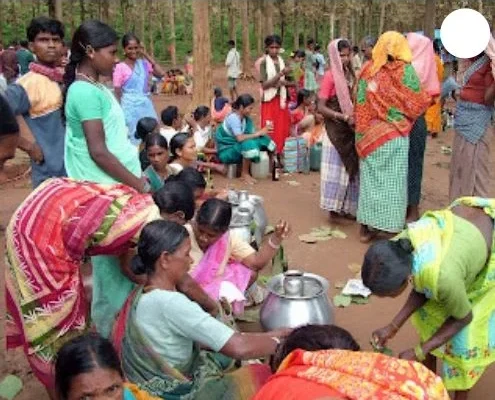Swasthya Swaraj Society is a grassroots level health rights organisation working specifically in Kalahandi, one of Odisha’s most underdeveloped, tribal-dominated districts. Its Comprehensive Community Health Programme is run in 79 villages, covering over 14,000 people from the poorest households in the region.
One major aspect of the Society’s work is direct clinical services: it runs two health centres in Rampur block. The health centres have teams of doctors from different parts of the city, and provide a range of health services to thousands of villagers in the most remote parts of Kalahandi. Some of these services include emergency minor surgeries, out-patient and in-patient services, diagnostic laboratories with basic tests, an X-ray unit and a pharmacy, and ambulances for patients who need to be transferred to higher health centres. It also runs travelling health camps and programmes to control the spread of diseases like malaria and tuberculosis.
The other major aspect of the Society’s work is community empowerment. It has trained 79 illiterate tribal women as Swasthya Sathis, who not only serve as a point of contact between villagers and health services, but are also trained in providing basic medical care. Another 69 women have been trained as birth attendants. It has also created a free, two-year Community Health Practitioners course to train tribal girls who have finished Class 12 to become mid-level health workers. In addition to all these, the Society also runs programmes to empower adolescent girls, train informal pre-school teachers and traditional healers respected by tribal communities.
The project supported by MFE:
Gaon Swasthya Poshan Ghar
The primary aim of this five-year project is to build three Gaon Swasthya Poshan Ghars – village health and nutrition centres – in order to increase the survival rate of mothers and babies in the Kutia Kondh tribal community of Kalahandi’s Rampur block. Through the services and interventions provided at these centres, the Society aims to reduce maternal, infant and child mortality as well as child undernutrition.
The Society wants its Poshan Ghars to directly benefiting at least 15,000 people in 79 villages. It also wants the state government to adopt the model of healthcare provided by the centres, while making it easier for villagers to access – or be referred to – primary health centres.
In order to reduce child mortality and undernutrition rates, the Poshan Ghars will ensure that at least 90% of the target child beneficiaries are given all required immunisation doses. They also aim to bring down the percentage of children suffering from severe acute malnutrition and moderate acute malnutrition from 25% in the first year to 1% in the fifth year. Meanwhile, to reduce maternal mortality and morbidity, they aim to increase the rates of institutional deliveries from 20% in the first year to 70% in the fifth year of the project.

